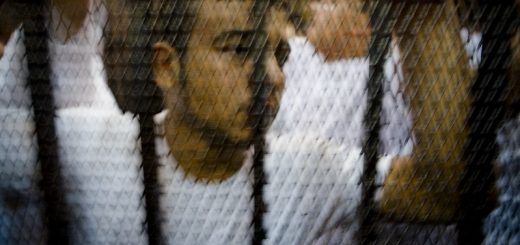Race, Gender, and Religion in the Courtroom: Three Critical Implications of R v NS – Part II
In Part II of this comment on R v NS, 2012 SCC 72, I raise two additional implications of the case related to equity, inclusion and fairness.
B. Religion and Culture in Bite-Sized Chunks
The reasoning of the majority decision presents an incomplete picture of Canadian history and obscures “made-in-Canada” xenophobia in a way that impacts all racialized and “minoritized” communities. In determining that two seeming inconsistencies in NS’s observance of the niqab amounted to a weak faith, the preliminary inquiry judge aligned with the colonial tradition of simplifying and undermining complex religious and cultural values, beliefs and norms of racialized communities. Indigenous, African and Asian communities have been reduced to simple and erroneous arithmetic in the same way that NS was at trial.
Consider the language used by the majority, albeit on a few occasions, to describe NS’ religious observance. Phrases such as “covering a witness’ face” (para 25) or “a witness who wishes to wear [a niqab]” (para 29) subtly secularize, recharacterize and diminish the nature of NS’ religious observance by stripping it of its cultural and spiritual justifications. Based on my fledgling understanding of the Muslim observance, wearing the niqab is part of a larger requirement of modesty and it represents, in part, a vow between a woman and the Divine. As such, wearing a niqab is neither a “choice to cover one’s face” nor a simple “wish” on the part of the observer.
Whose interests are served by suggesting that wearing a niqab is simply about choosing to cover one’s face? No doubt, the role of an appellate court includes providing direction to lower courts in the event that similar cases arise. Still, these descriptions delegitimize the observances of the Other in favour of the maintenance of dominant voices represented by the criminal justice system, especially when juxtaposed with a sophisticated explanation of the sanctity of the fair trials.
An unfortunate outcome of this limited reading of NS’ religious and cultural beliefs is preference in the court’s reasoning in favour of the accused. This is most obvious in LeBel and Rothstein’s concurring reasons. Before advocating for an outright ban on niqabs in the courtroom, the concurring reasons affirm that religious freedom and rights to a fair trial are both constitutional rights. But, in doing so, the judges do not raise the generally accepted principle that religious rights extend beyond the rights of individuals to their communities (R v Edwards Books and Art Ltd, [1986] 2 SCR 713, at para 145).
Why might the collective aspect of NS’s rights as a Muslim woman matter in this decision? Well, one of the strengths of the majority’s judgment is that it does not appear to be about the individual accused. In fact, they are rarely named in the judgment at all. Their “right” to strip NS of her religious freedom is a stand-in for a broad collective right – the rights that all have to a fair trial.
What’s more, this right extends to the entire functioning of the criminal law itself. The reasoning goes something like this: “If we permit niqab-wearing women to testify while covering their faces, then the courts will no longer be able to protect the innocence of people who are accused of crimes. The integrity of the criminal justice system is at stake.” But the law of evidence is flexible enough to grapple with more equitable ways to balance accused’s rights with religious freedoms that acknowledges the impact on communities.
A further outcome of recharacterizing and reducing NS’ religious rights is that it sets the stage for an over-emphasis on the rights of the accused in this case. In its discussions of the impact on access to a fair trial, it only considers how the accused’s rights could be violated by allowing a witness to testify while wearing a niqab. Of course, the Charter right is meant to ensure the legal rights of the accused in that it protects the presumption of their innocence and assures them a fair trial.
However, as Justice Abella notes in her dissenting reasons, NS’s rights to a fair trial are also at stake in this case. Nowhere does the majority adequately consider whether the trauma of removing her niqab could potentially distort the testimony that she provides. Justice Abella approaches this point in her deconstruction of the reliability of “demeanor” (see paras 86-108) as an indicator of credibility. But she does not go as far as to consider that ordering a Muslim woman to remove her niqab in court as she is cross-examined on the incestuous behaviours of her family members could affect her demeanor in ways that could prejudice her testimony in the accused’s favour.
The Court ought to have squarely faced the irony of the fact that the proposed vehicle for protecting the presumption of the accused innocence was the violation of the (re)victimization of the alleged victim of incest. In other words, in order to ensure that NS’ uncle and cousin’s innocence is protected, the Court must presume that NS’ religious rights are not inviolable, and therefore compromise her innocence by transgressing her right to observe modesty.
C. Carving Out Race
I find it peculiar, but unfortunately not surprising, that there is no mention of race in the Supreme Court’s decision. No doubt “the events of 9/11” – forgive the sanitation – have made it socially acceptable to approach racialized peoples who follow the Muslim faith and its traditions with irrational suspicion. Islamophobia and racism provide rationalizing myths that informs national consciousness.
In their concurring reasons, Justices LeBel and Rothstein acknowledge that the constitution protects religious rights, but those rights should not compromise Canadian “common values” including multiculturalism, religious neutrality, rule of law, and openness of the courts. In terms of the latter, they note that trials are ultimately “processes of communication” and that
wearing a niqab … does not facilitate acts of communication. Rather it restrict them. It removes the witness from the scope of certain elements of those acts on the basis of the assertion of a religious belief in circumstances in which the sincerity and strength of the belief are difficult to assess or even to question. The niqab shields the witness from interacting fully with the parties, their counsel, the judge and … the jurors.
Reading these words, I couldn’t help but ask myself what such logic – logic that is now law – means for the Muslim community in Canada, and what it means for all of us who observe cultural traditions that are similarly “incongruent” with Canadian values. It also reflects the patriarchal and sexist reading of women of colour. As much as we might want to deny it, it was truly Canadian to decide as the trial judge did. The majority would have done well to recognize and admonish this.
I also think about the fact that the parties in this case are not only from the same religious, racial and cultural community, they are also immediate family members. The alleged sexual violence – the alleged incest within this family and this community – is being decided by a criminal justice system that does not possess the commitment to grapple with the various intersections of race, gender, sexuality, and religion that are at play.
In her dissenting reasons, Justice Abella takes up some of these intersections. First, Justice Abella notes that the harm caused by forcing a woman to remove her niqab outweighs the accused rights to a fair trial (para 109), because alternatives to the removal of her niqab exist, and the court could – as it has in cases of disability or remote witnesses – find innovative ways to resolve the competing interests (paras 85, 104).
Second, she points out that if, as the majority has decided, courts are empowered to order the removal of a niqab in cases where the witnesses testimony is contested, then that will apply for almost all sexual assault cases (para 96). This would mean that virtually all women who wear religious head coverings can be assured that in order to convict their abusers, they will have to appear unveiled. Is this not a reversion to cases of decades past where women were subjected to psychologically violent conditions in order to convict their abusers?
For example, at one point, defense counsel could rely on a woman’s past sexual behaviour as a defence to charges of rape. While this is not the same situation per se, the effect of the act on a Muslim woman’s dignity could nonetheless be at stake. As Justice Abella stated in her reason, the effect could be to deter women who observe the niqab from bringing their abusers to trial, or from appearing as witnesses to corroborate the claims of other women in their communities.
IV. CONCLUDING THOUGHTS
Cases that directly involve issues of equity and inclusion – particularly those that deal with racism and intersection oppressions – rarely make it to the Supreme Court of Canada. As a result, law students may be limited to extrapolating and drawing inferences from cases that give rise to issues of race. NS provides such an opportunity. What’s more, NS could have been my family member, my best friend, my partner, or me. Commenting on cases such as NS may assist the legal community, including the judiciary, in becoming more proficient in engaging issues of race and racism in Canada, so as to realize equity for all.








Join the conversation